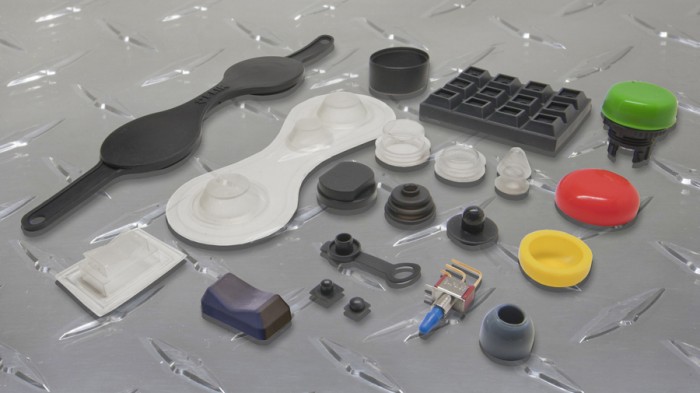Choosing the right Rubber Material

Choosing the right Rubber Material subtitle
When choosing rubber material there are several factors to consider in determining proper selection including: the application for which the rubber material is to be used; the media to be sealed and the temperature and pressure to which the rubber material will be subjected. Once each of these factors has been considered and a rubber material has been chosen, engineering calculations should either be checked manually or by using rubber material selection software.
Our customers can choose from six basic rubber materials. In addition to the materials listed below, other materials are available upon request.
Silicone
Our silicone rubber has an excellent temperature range and can withstand low temperatures without becoming brittle. However, it is usually not recommended for dynamic seals because it does not have optimal solvent or oil resistance. The standard temperature range for silicone is from -62°C to 204°C and -80°F to 400°F. Other temperature ranges available upon request.
Neoprene (Chloroprene)
Our neoprene compounds are commonly chosen by the refrigeration industry for their resistance to ammonia and freon. Neoprene is also used for numerous applications in the automotive industry because of its excellent resistance to oil. Resistance to ozone, sunlight and oxygen also make this a great choice for products exposed to adverse weather conditions. The standard temperature range for neoprene ranges from -40°C to 107°C and –40°F to 225°F. Other temperature ranges available upon request.
Fluorosilicone
Our fluorosilicone compounds are commonly used in the automotive and aerospace industries because of their excellent fuel, oil and solvent resistance. The standard temperature range for fluorosilicone is from –55°C to 177°C and –67°F to 350°F. Other temperature ranges available upon request.
Buna-N (Nitrile)
Our Buna-N compound is the most common seal material chosen by our customers because of its versatile resistance to petroleum-based substances, water and alcohols. The standard temperature range for Buna-N is from –40°C to 107°C and -40°F to 225°F. Other temperature ranges available upon request.
EPDM
Our EPDM compounds are commonly used in outdoor environments and are excellent for weather & water resistant applications/appliances having excellent ozone, steam and chemical resistance. The standard temperature range for EPDM ranges from –54°C to 107°C and –65°F to 225°F. Other temperature ranges available upon request.
